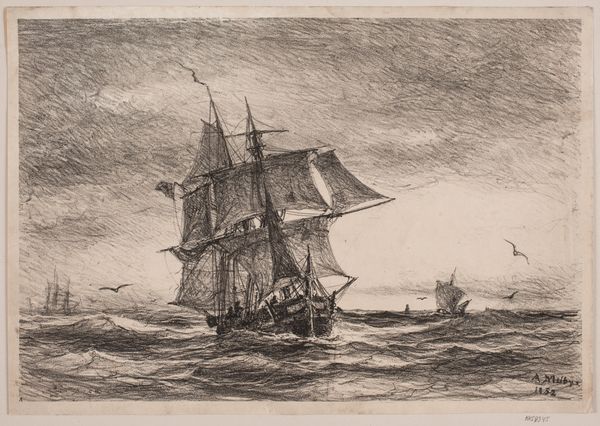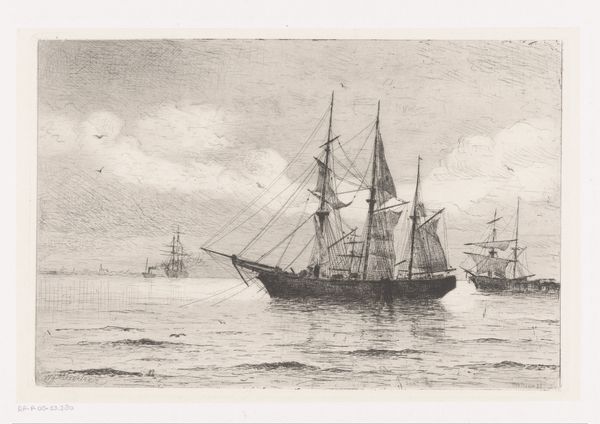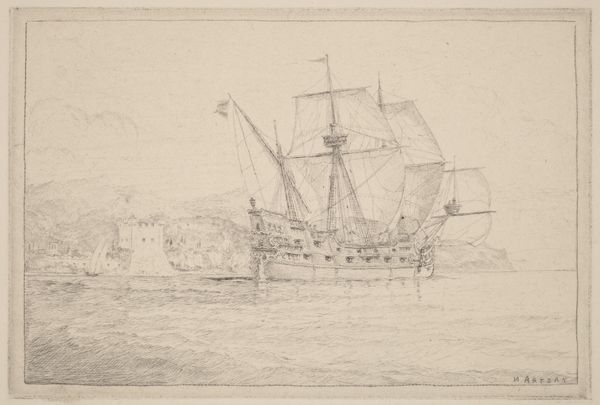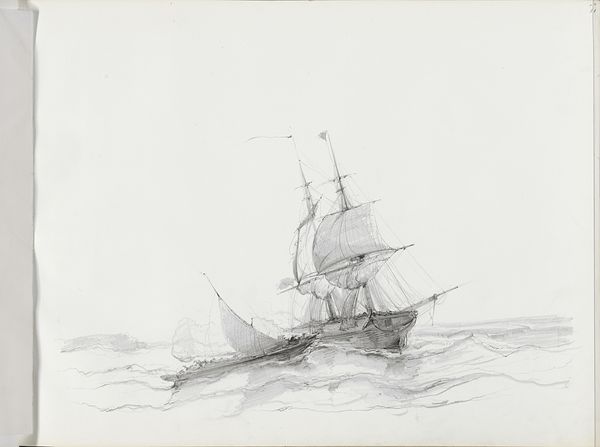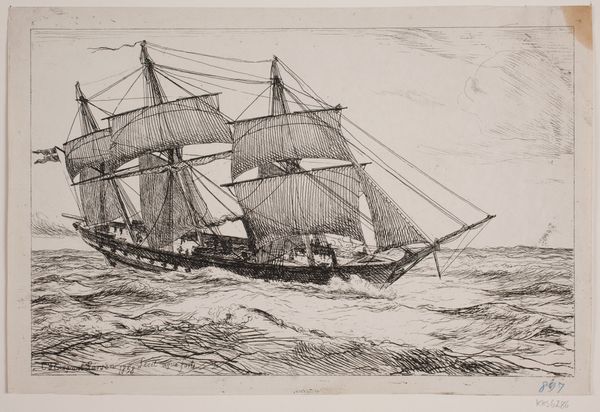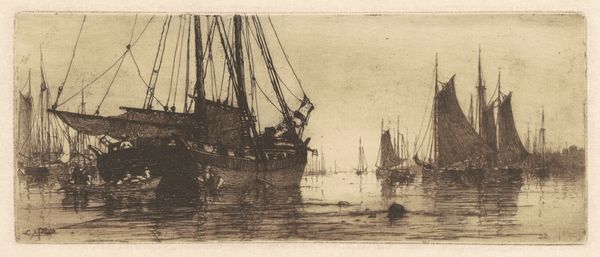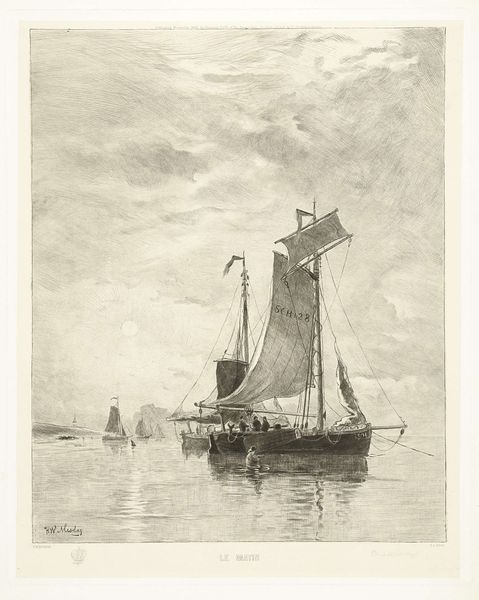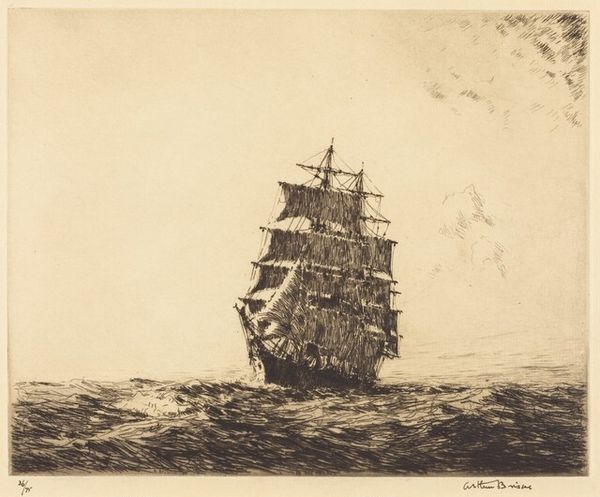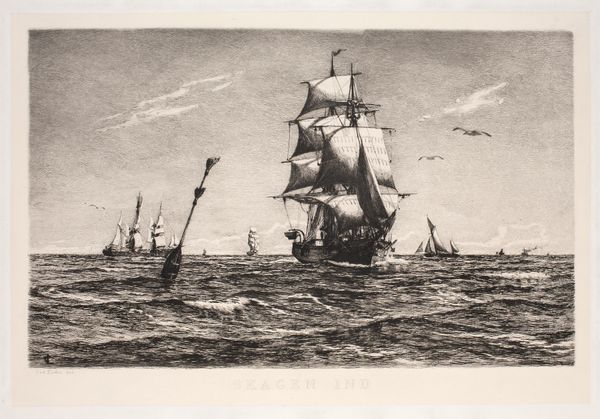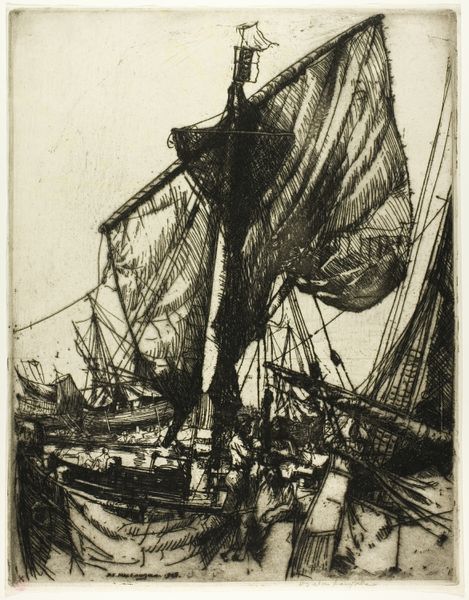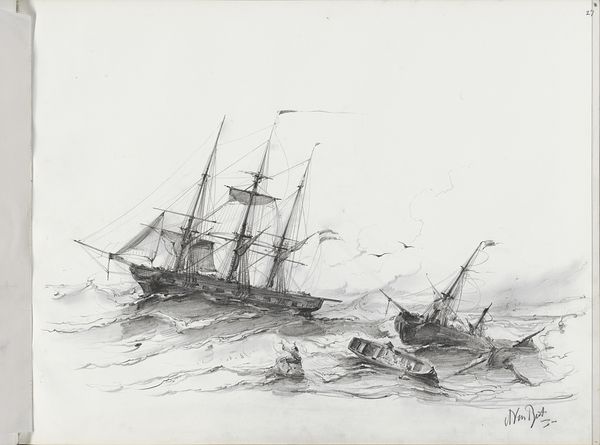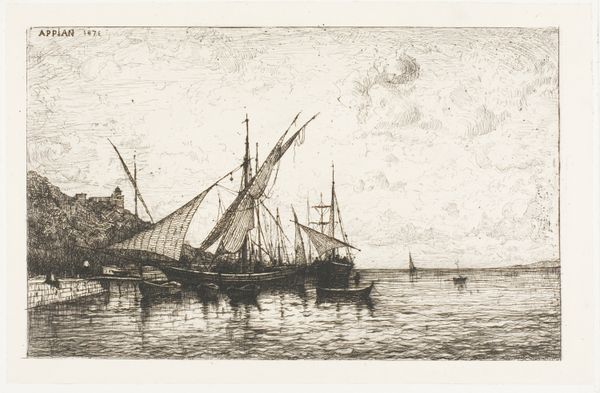
print, etching
#
ink drawing
# print
#
etching
#
line
#
realism
Dimensions: plate: 24.92 × 17.46 cm (9 13/16 × 6 7/8 in.) sheet: 31.27 × 24.77 cm (12 5/16 × 9 3/4 in.)
Copyright: National Gallery of Art: CC0 1.0
Curator: Welcome. Before us, we have "Cutting In," a 1919 etching by George Canning Wales. Editor: It evokes a sense of profound isolation, doesn’t it? The monochromatic palette and the sheer vastness of the ocean... it almost feels melancholic. Curator: Indeed. Note how Wales uses the etching technique to create fine, precise lines. The details in the rigging and the reflection on the water are particularly noteworthy, contributing to a strong sense of realism. Editor: Looking at this now, though, I’m thinking about global trade, about colonialism. These ships were conduits, carrying not just goods but also ideologies, power imbalances...it’s difficult to separate that history from such a majestic image. Curator: The composition definitely supports a discussion of such systems. The ship dominates the foreground, an almost sculptural form that commands the visual space. It speaks to its function, its implied mastery over nature. Editor: Yes, the ship is definitely foregrounded in the viewer’s space, a visual cue implying power. But I think too, that it’s worth acknowledging that the scene feels incomplete, even unsettling. Curator: Incomplete? Unsettling? In what sense? Editor: Where are they going? What are they doing? We're missing crucial elements. That void is itself an evocative absence suggesting how histories of commerce were written to systematically erase certain people, realities, and even ecologies. Curator: That’s a compelling reading, I must say. The absence then, amplifies a message. As a formalist, I still marvel at the intricate texture Wales achieved with the etching needle and acid, regardless of the specific context. Editor: Art always exists within a web of social relations; that, I think, is key to how it affects and reflects. Still, these renderings of merchant vessels—and their place within a broader sociohistorical perspective—undoubtedly warrant further reflection.
Comments
No comments
Be the first to comment and join the conversation on the ultimate creative platform.
